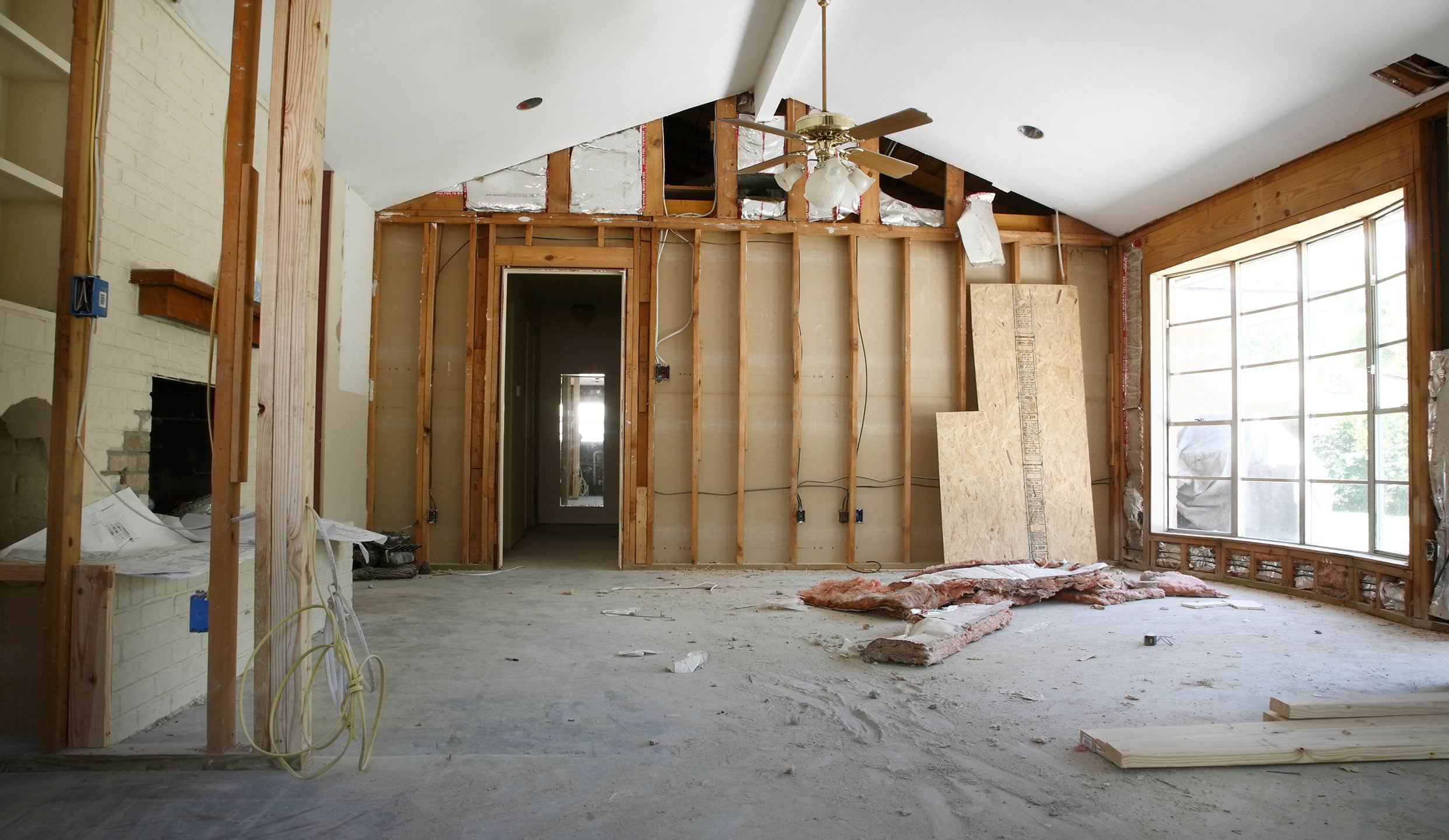So, you’re thinking about buying a fixer-upper – or you have a space you want to turn from “meh” to amazing, but you’re not sure how to crunch the numbers. When it comes to financing a renovation, your options depend on how long you’ve owned your home and what you’re planning on doing to it. Based on those factors, here are three scenarios:
Scenario 1: You’re a first-time buyer and you’ve found a property you like, but it’s going to take some cosmetic upgrades for you to really love it. (By cosmetic, I mean flooring, a new kitchen, an upgraded bathroom – nothing structural.)
Option 1 is moving in and waiting until you’ve built up enough equity to finance the work. Option 2? Heading to the bank of mom and dad – or finding an alternative source of credit. But option 3, which I think is by far the best (unless, of course, mom and dad aren’t charging interest), is a “purchase plus improvement” mortgage. All financial institutions offer them, but a lot of consumers don’t know about them.
Basically, this type of financing covers the cost of your home less the down payment, like a regular mortgage. But it also adds up to about $40K for improvements – at the same interest rate as your mortgage. A lot of buyers don’t realize they can do this. They take out a regular mortgage, then finance their renos with unsecured, high-interest credit like a VISA.
Purchase plus improvement means you don’t end up paying high interest on that money. And another nice thing? It helps protect you from unscrupulous contractors. That $40K (or however much you borrow) doesn’t come to you in a lump sum – you have to get a quote from a qualified contractor and submit it to the lender. If it’s approved, they’ll advance the money to a lawyer, who will hold it in trust until the work is completed and inspected. Only then will the money be released so you can pay the contractor.
Keep in mind that this option isn’t for every type of reno, and a bank will only approve a plan that makes financial sense. New hardwood that’ll boost the value of the house? Great. A separate entry that will let you turn the basement into a rental unit? They’ll probably like that, too. But if you want to put in a pool or do something else that won’t increase value, be prepared for a no.
Scenario 2: You’ve owned your home long enough to build some equity, and want more space for your new baby/home office/basement fitness room.
This is where the most traditional reno financing model comes into play – a home equity line of credit.
Most financial institutions offer these types of loans, and they’re a great tool to help you minimize costs. The beauty of an LOC is that you don’t have to borrow the full amount you’re qualified for, you’re only accessing what you need. You can pay it back, then borrow it again – it’s very flexible. LOCs also allow you to just pay back the interest, which can free up your cash flow while you renovate, since there are no big payments to make. But eventually, you do need to be proactive about repaying the principal, or else you’ll pay a lot of interest over time.
Scenario 3: You want to tear down and rebuild from the ground up, or make major structural changes.
It’s definitely a popular choice in the 416 these days, as buyers snap up tiny houses on large lots and dream big. But that isn’t renovating – it’s building. Financing those kinds of projects is more complicated than a mortgage or a line of credit. I recommend talking to a mortgage broker or lending specialist before you put an offer on that teardown.
How much is enough?
No matter what the scenario, the question I’m asked most often is “how much should I borrow?” I recommend factoring these three things into your math:
- Build in a buffer. Renos invariably cost more than you think. Factoring in an extra 20% will cover you if you open up a wall and find faulty wiring, if you fall in love with the premium tiles instead of the ones the contractor quoted on, or if you decide you can’t live without that natural gas hookup in your beautiful new kitchen.
- Don’t cheap out on a contractor. You get what you pay for; “cheap” usually comes at a cost. A low estimate could mean the contractor is cutting corners or isn’t experienced enough to quote accurately, and you’ll end up paying more in the end. Get multiple quotes, and if one comes in much lower than the others, ask why.
- Stick to the plan. The worst overruns I’ve seen have been with homeowners who micromanaged the trades. When you pull “since you’re here, can you do this, too” a bunch of times, it adds up fast. It’s like going to the grocery store with a list – follow the plan and you’ll be less likely to overspend.
A reno can mean the difference between a house you like and a home you love – and it may be more accessible than you think. You just need to educate yourself on the options. If you have questions or would like to talk about financing ideas for your reno, get in touch – I would be happy to help.








